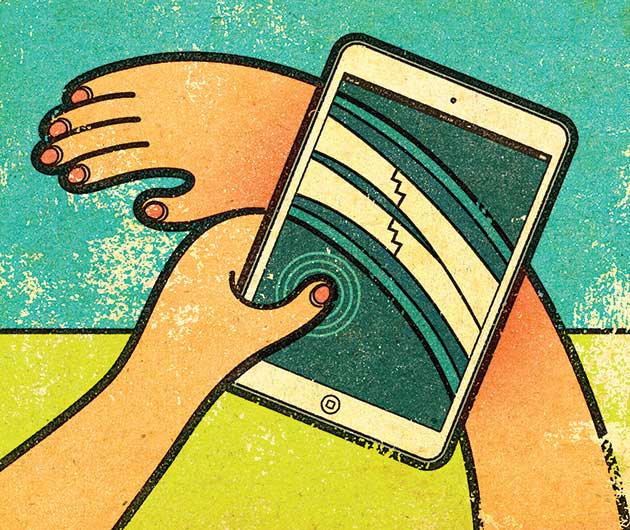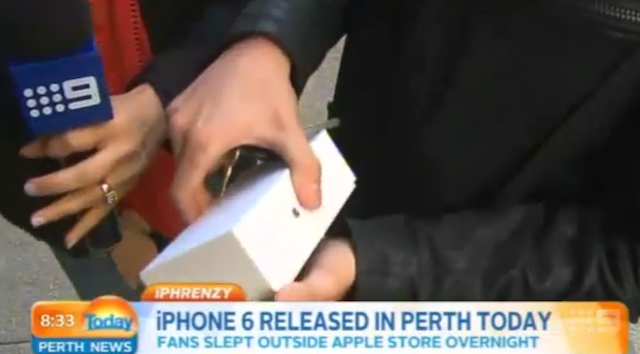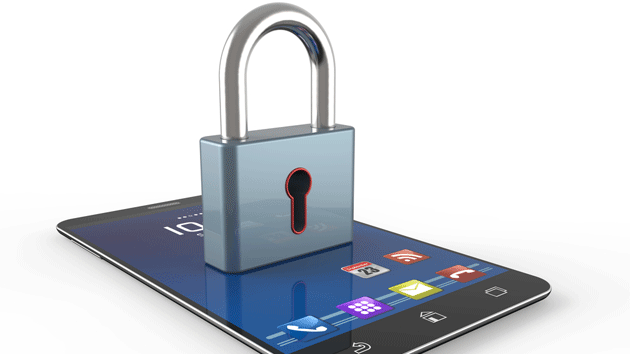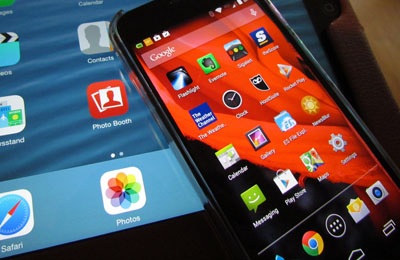
In 2013, when Julie Hudak read about an iPhone app that could diagnose skin cancer, she downloaded it right away. Her husband and sister-in-law had both died of melanoma, and she didn’t want to miss any early signs of the disease in her three children. It was easy to use—simply upload a photo of a mole and get a color-coded result: Green meant cancer was unlikely, yellow was a maybe, and red indicated danger. Even though the dermatologist had assured Hudak just a week earlier that her children’s skin looked fine, she decided to snap photos of her 11-year-old daughter’s moles. Seconds later, the results appeared. “Some came up yellow, and one was red,” Hudak recalls. “I panicked.” She called the dermatologist for an emergency appointment.
Online retailers like iTunes and Amazon offer thousands of apps promising all kinds of real-time information about your body—they can measure blood pressure, take your pulse, track your menstrual cycle, and tell you how well your lungs are working. Mobile health is one of the fastest-growing app categories: According to the consulting firm research2guidance, there are 100,000 mobile health apps on the market, double the number available two and a half years ago. The industry is worth some $4 billion today, and analysts predict that it will reach $26.5 billion by 2017.
It’s not hard to understand why these apps have taken off. For one, doctors are busier than ever; the Health Resources and Services Administration reports a shortfall of 8,200 primary-care physicians. Yet replacing clinic visits with smartphones can be a risky move. A few years ago, for example, Nathan Cortez, a law professor specializing in health care regulation, noticed an app that claimed to treat seasonal affective disorder: Patients who felt depressed in winter months could simply gaze into their phones, which supposedly emitted mood-lifting light. “The phones couldn’t possibly give off enough light to make a difference for people with this disorder,” Cortez told me. “Here was this burgeoning industry creating all of these apps that could be really useful—or really dangerous.”
Indeed, a number of recent studies have identified medical apps that failed to measure up. In 2011, pharma giant Pfizer recalled a rheumatology calculator app after the company found that its swollen-joint measurements—calculated using self-reported data—were off by as much as half. Even most simple pedometer apps don’t count your steps correctly, a 2012 study found. For a 2013 paper, researchers from the University of Pittsburgh Medical Center tested four skin cancer diagnosis apps—similar to the one Hudak used on her kids—and three of them missed at least 1 in 3 melanomas.
You might expect that the Food and Drug Administration would regulate these apps, and it does—but mainly the ones paired with diagnostic gadgets like, say, a blood-pressure cuff. Even then, its database is full of app-related complaints. One blood-glucose tracker had 59 “adverse events” since 2012—many involving diabetics who took too much insulin based on false readings and had to be rushed to the hospital.
Most health apps, though, are classified as “informational” or “entertainment” to escape FDA oversight. But their marketing talk can send confusing signals. WebMD’s Symptom Checker, for instance, lets you “select the part of the body that is troubling you, choose your symptoms, and learn about potential conditions or issues,” even as the website notes that it “does not provide medical advice.” The description of Real Blood Pressure Calc says, “Now you won’t have to carry heavy equipment with you. All you need is this ever useful application.” But a disclaimer states that it’s “just meant to give you a hint of your actual BP measurements.”
All of this fuzzy language caught the attention of the House Energy and Commerce Committee, which over the past few years has held hearings on the safety of health apps and whether they warrant a shorter leash. Tech companies such as IBM, McKesson, and Qualcomm argue that requiring all health-related apps to undergo rigorous FDA review would stifle innovation. Cortez, meanwhile, argues that tighter rules would strengthen the industry by discouraging fly-by-night operators.
For now, it’s consumer beware. Eric Topol, a cardiologist and medical-device researcher, suggests that people choose their health apps with care. Be skeptical, for example, of the unregulated ones that rely solely on your smartphone. One promising development? Apps that involve actual doctors in the process. (The one successful skin cancer app from that 2013 study showed users’ photos to a physician.) There’s also Google Helpouts, which lets people consult with a vetted doctor. It can run you $5 to $8 a minute on the high end, but the price may be worth it if a worrisome symptom is costing you sleep.
As for Hudak, she rushed her daughter back to the dermatologist, only to learn that the app had gotten it wrong: The red-alert mole was benign. She decided to trash the program. “It’s not worth feeling comforted when you really are in danger—or panicked when there is nothing to worry about,” she says. “I can’t live in fear.”

















